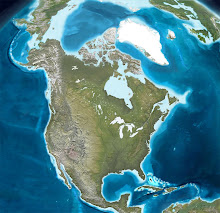By Steve Hammons
Is it possible that J.D. Vance, author of the controversial, best-selling book "Hillbilly Elegy," could have Cherokee background from his Kentucky ancestors?
The short answer is “yes.” Many people who have family roots in the southern Appalachian region do have some Cherokee DNA in the family tree.
Why? Because in the colonial era before the American Revolution and as the new nation expanded west in the 1700s, there was a very significant degree of intermarriage between Anglo, Scottish and Scots-Irish newcomers and the Cherokee in the southern Appalachian mountain area.
During the colonial period, Cherokee territory included parts of what are now Kentucky, West Virginia, Virginia, Tennessee, North Carolina, South Carolina, Alabama and Georgia.
Early colonial explorers, hunters and trappers, traders and other settlers found that the Cherokee could be friendly.
Because the early Cherokee culture was female-oriented and matrilineal, Cherokee women had much freedom to establish romantic relationships and marriages with Anglo, Scottish and Scots-Irish men if they chose.
The Ron Howard Netflix movie based on the "Hillbilly Elegy" book is now being filmed in Vance's hometown of Middletown, Ohio. The book and movie tell a story of his upbringing in Middletown and the region of southwest Ohio where many Kentuckians have migrated.
LOOK IN THE MIRROR
Today, there reportedly may be millions of Americans who primarily self-identify as white, yet also have a Cherokee connection in their lineage. Some families may know about it, some may suspect it and some people might have no idea of this possibility.
Is J.D. Vance one of them?
This connection could be many generations back in the family tree, and with few or no records, clues or even family stories about it. When investigating the possibility of such a link for Americans with a Cherokee connection, what might be some clues?
As discussed, one indicator could be family history in the southern Appalachian mountain region and areas including and surrounding the states of Kentucky, Tennessee, Virginia, West Virginia, North Carolina, South Carolina, Alabama and Georgia.
Physical traits could include a somewhat dark skin complexion, dark hair and eyes, the somewhat stereotypical cheekbones and facial features, light beards and body hair in males, lack of baldness in males and somewhat thick, coarse hair.
Recent controversies in the media have featured the “shaming” of Americans who might or do have Cherokee or other American Indian lineage but are not official members of government-approved Native American groups.
This could discourage some people who might suspect a Cherokee link in the family tree from doing research into it.
But facts are facts.
According to historians and scholars, in the 1700s and 1800s many mixed-ethnicity children were born in the southern Appalachian region and a unique blend of these cultures flourished.
These mixed-ethnicity children sometimes adopted the patrilineal Anglo, Scottish and Scots-Irish names of their fathers and paternal grandfathers. Or, in many cases, there was some blend of Anglo names and Cherokee names, and sometimes in a mix of both English and Cherokee languages.
As the generations rolled on in the 1700s and 1800s, kids grew up, got married and had their own children. And as the larger U.S. society changed, and many Cherokee were forced west by various pressures and the infamous Trail of Tears (1838-39), these mixed-ethnicity Americans blended into the larger population.
It was probably a good idea to “pass as white” in that region when the Cherokee were rounded up by soldiers, their homes and farms stolen, forced into detention camps and then forced to endure extreme hardships and mass death as they were marched and shipped to Oklahoma – Indian Territory.
By the time of the Trail of Tears and after, there were many mixed-ethnicity people who were predominantly white and who had adopted Anglo, Scottish and Scots-Irish names.
And it wasn’t necessarily a good idea to talk about Cherokee grandparents or great-grandparents back then, because there were laws on the books that discriminated against American Indians in significant ways. Anti-Indian laws, bias, attitudes and actions were common and significant.
CHEROKEE HILLBILLIES
The epicenter of Cherokee culture today in the old eastern homeland is the area around the Tennessee and North Carolina border. The U.S. government-recognized Eastern Band of Cherokee Indians is based there in Cherokee, NC.
The Great Smoky Mountains National Park and the Nantahala National Forest surround the Eastern Cherokee lands. The Blue Ridge National Heritage Area (a partner of the National Park Service) in the Blue Ridge Mountains is also nearby. It includes Cherokee heritage events of various kinds including festivals, music, arts and crafts, and museums.
Throughout the entire southern Appalachian region and surrounding states, there reportedly could be tens of thousands or hundreds of thousands of Americans with Cherokee DNA somewhere in the family tree.
Over the generations, many Kentucky and Appalachian families have migrated along the so-called “hillbilly highway” to the Cincinnati region and the towns north of it, such as Middletown where Vance was raised.
It is a logical conclusion that some of these Appalachian families might or do have Cherokee in the family tree – maybe even J.D. Vance’s family.
And with the tremendous mobility that American society has experienced in recent decades and centuries, people with Cherokee background have spread far and wide – beyond the ancient mountain homeland, beyond Oklahoma Indian Territory, even beyond the borders of the U.S.
The story of the Cherokee is a unique one. It is different from the stories of other American Indian tribes, with the blending of the Cherokee with Anglo, Scottish and Scots-Irish believed to be far more widespread than that of any other tribe. Yet, the experience of the Cherokee is also very similar to that of other North American native groups in many respects.
As we strive for “a more perfect union” in our society now, it might be worthwhile to learn more about the experience of the Cherokee and their ancient southern Appalachian homeland.
And for those American families who just might have Cherokee within them and don’t know about it or are not sure, there are many ways to begin research and investigation to find out more.
You might be surprised about what you learn.
(If you liked this article, please see my other recent ones about the Cherokee on the Joint Recon Study Group and Transcendent TV & Media blogs.)
(Related article “Storytelling affects human biology, beliefs, behavior” is posted on the CultureReady blog, Defense Language and National Security Education Office, Office of the Undersecretary of Defense for Personnel and Readiness, U.S. Department of Defense.)
skip to main |
skip to sidebar

In the past 30 days, readers from approximately 40 countries or territories using about 20 languages visited the Joint Recon Study Group site.

To see more articles, scroll down the right-side column.

Steve Hammons

Articles from the Joint Recon Study Group site and Transcendent TV & Media site are included.
The Joint Reconnaissance Study Group is the San Diego-based, combined-service/agency, research-and-activities team in my novels "Mission Into Light" and sequel "Light's Hand." This site contains information of interest to the JRSG.
Home page: Joint Recon Study Group site
Readers from around the world visit this site.

In the past 30 days, readers from approximately 40 countries or territories using about 20 languages visited the Joint Recon Study Group site.
April 2021 threat alert: ‘Force protection’ for our troops now the responsibility of all Americans
First responders must deal with society’s problems, shortcomings, injustices every day
Could some UFOs be linked to Native American 'white stone canoe' legends, stories?
Wildland firefighter basic training available at community colleges, tech schools, training centers
‘Boomer remover’ coronavirus is bigger threat to WWII generation that saved the world
‘Black swan’ events that aren’t: Coronavirus, climate emergency, unidentified aerial phenonema
Reagan’s complete 1987 UN message on ‘alien threat’ overlooked: Grave danger here, now
Was Reagan briefed about UFOs and original ‘Day the Earth Stood Still’ movie?
My military draft lottery number was #165 during final Vietnam War years
“Keep On The Sunny Side,” by The Whites, from movie O Brother, Where Art Thou?”
Living along Ohio River for centuries, Native Shawnee called it ‘Kiskepila Sepe’ – ‘Eagle River’
Native American words around us: States, towns, rivers, lakes, terrain, plants, animals, military
Athens County, Ohio, was key spot when colonists, Redcoats fought Shawnee in 1774 battle
1787 Northwest Ordinance set course for Ohio, Indiana, Illinois, Michigan, Wisconsin, Minnesota
Smallpox-tainted blankets were 1763 bioweapon on northern Appalachian Mountains frontier
Diana Krall performs “Maybe You’ll Be There" live in Paris with Paris Symphony Orchestra 2001.
Books to read in 2021? Novels "Mission Into Light" and the sequel "Light's Hand"
Novel excerpt: Renew, prepare America with ‘Urgent Response Group’ for teens, young adults
Diana Krall performs “I Get Along” live in Paris with Paris Symphony Orchestra 2001.
Steve Tyrell sings “Give Me the Simple Life.”
Diana Krall performs “Love Letters” live in Paris with Paris Symphony Orchestra 2001.
Visit the article archives!

To see more articles, scroll down the right-side column.
Novel "Mission Into Light" overview on Amazon
Novel "Light's Hand" overview on Amazon
Adventures of the Joint Recon Study Group: Overview and synopses of activities and operations
Key chapter overviews: Points of interest in the novel "Mission Into Light"
Key chapter overviews: Points of interest in the novel "Light's Hand"
Multimedia rights available
English and foreign-language book rights, audio book and e-book rights for "Mission Into Light" and "Light's Hand" are available. Movie and TV rights are available.
I'm seeking agent representation for these works and rights.
Please contact Steve Hammons for more information at hammons55@gmail.com.
Feature film screenplay
I completed a feature film screenplay in 2006 based on “Mission Into Light” and “Light’s Hand” combining key elements of both novels.
The screenplay takes audiences into the adventures and discoveries of the Joint Recon Study Group and the relationships among team members, friends and associates as they explore leading-edge research and emerging transcendent developments.
I'm seeking agent representation for this screenplay.
.........................
I also wrote a TV series pilot script based on "Mission Into Light" and "Light's Hand" story. I'm seeking agent representation this script.
About the Author

Steve Hammons
About the Author
I was born and raised in southwestern Ohio near the Kentucky and Indiana borders, then went to college at Ohio University in the southeastern Appalachian region of the state near West Virginia.
I graduated with a dual major in communication (journalism focus) and health education (psychology focus) with a minor in pre-law.
Ohio U. is home to the respected Scripps College of Communication and E.W. Scripps School of Journalism.
I also completed two graduate-level courses in guidance counseling theory and method at Ohio U.'s College of Education, School of Applied Behavioral Sciences and Educational Leadership.
At the end of my undergraduate education at Ohio University, I moved to the beautiful American Southwest where I applied my education, continual training and and ongoing experience to related professional fields such as health care, journalism and special research areas.
My novels "Mission Into Light" and the sequel "Light’s Hand" are available in e-book and 6"x9" paperback from most online booksellers worldwide.
Readers review metaphysical-military-intelligence adventure novel ‘Mission Into Light’
My articles on DoD CultureReady blog, Defense Language and National Security Education Office
Transcendent TV & Media site
Past articles: Scroll down the right-side column for more articles.

Articles from the Joint Recon Study Group site and Transcendent TV & Media site are included.































































































































































































